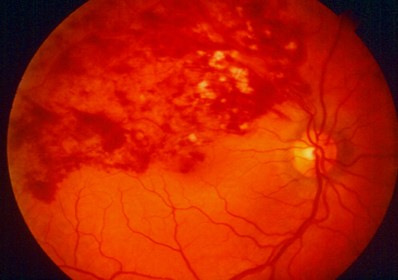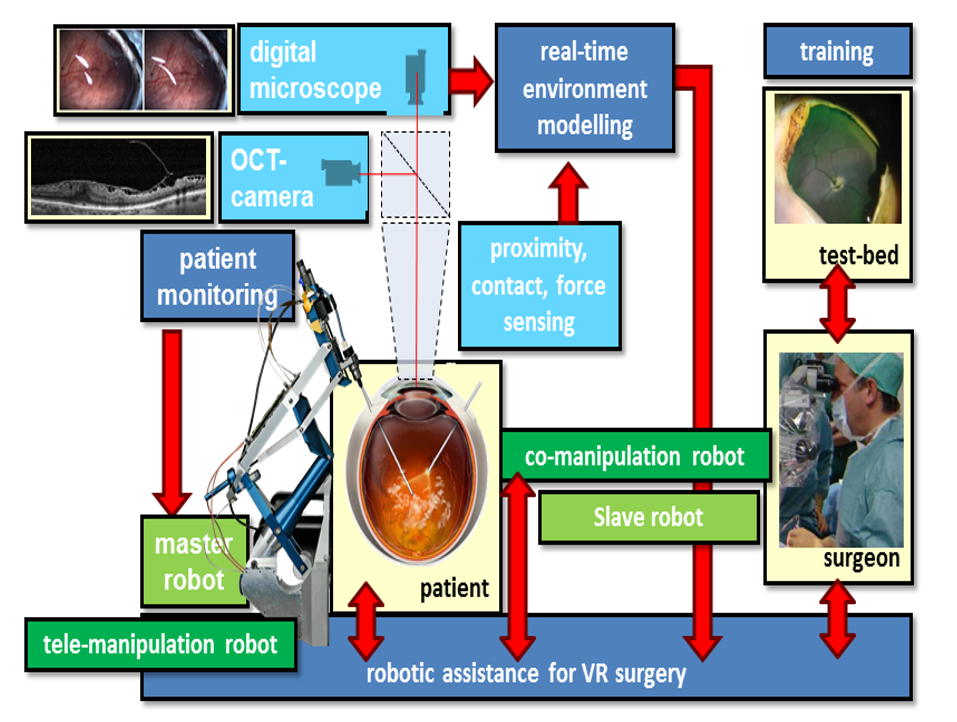Objectives
EurEyeCase will design instrumenation and control techniques to improve clinical outcome for a selection of relevant and urgent vitreo-retinal procedures.
Epiretinal membrane (ERM) and retinal vein occlusion (RVO) are common pathologic conditions (prevalence of 12% for people aged over 70 for ERM,and current estimate of 16 million suffering for RVO worldwide) with high complication rates that greatly reduce quality of life of the affected people. ERM can be treated by peeling the epiretinal membrane and RVO could in principle be treated by cannulating the occluded microvessel(s) and injecting anti-coagulants in it.
 |
 |
| ERM | RVO |
 |
Currently epiretinal membrane peeling is considered to be a high-risk procedure. The surgery is only performed by expert vitreoretinal surgeons in a limited number of centres worldwide. The procedure is performed manually and is known to be error-prone. In contrast, EurEyeCase will enable reliable epiretinal membrane peeling by means of robot-assistance. This will be achieved by ensuring peeling forces stay below 7.5mN and instrument motion does not exceed 80 µm/s, thus avoiding retinal tear. |
|
Retinal vein cannulation and subsequent injection of thrombolytic agent is currently not put into practice due to the extreme requirements for positioning precision. In addition, a 10 minutes flush of a thrombolytic agent is required to achieve lysis of the thrombus. Manually, it is possible to flush during 20 seconds at the most. Currently, only the symptoms secondary to retinal vein occlusions are treated, without solving the actual problem. EurEyeCase will demonstrate the feasibility of retinal vein cannulation by means of robot-assistance. |
|
|
EurEyeCase advanced robot-assisted surgery system will cover all aspects described by the picture below.



